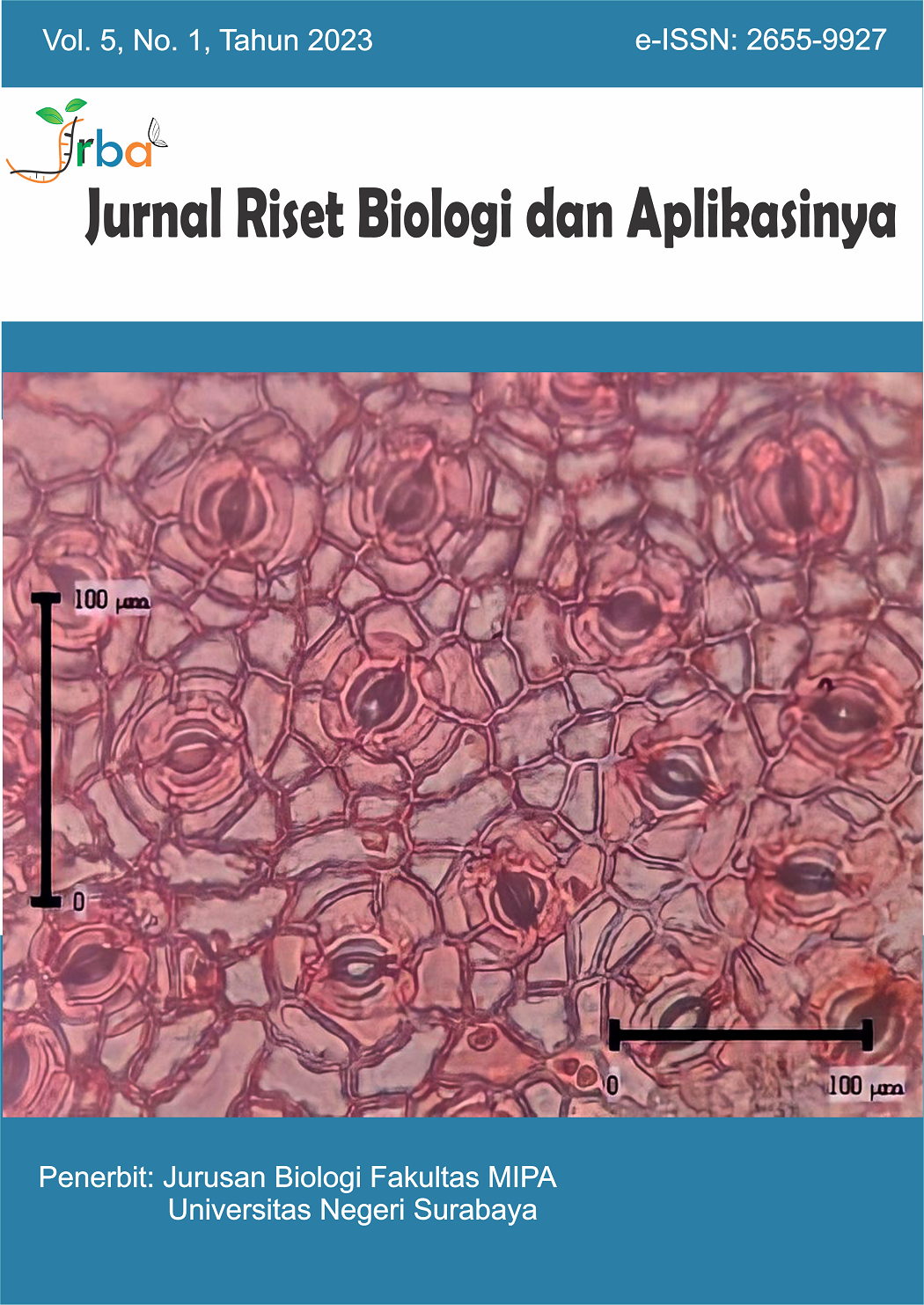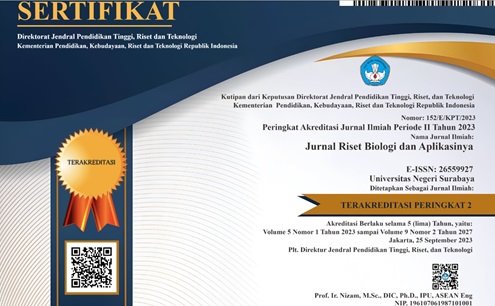Genetic Profile of Local Buffalo (Bubalus bubalis) Populations in Pacitan and Tuban, East Java, Indonesia Measured by the Molecular Marker of INRA032 Locus
DOI:
https://doi.org/10.26740/jrba.v5n1.p37-42Abstract
This study focused on the application of microsatellite markers at the INRA032 locus for genetic diversity assessment in buffalo (Bubalus bubalis) populations in Pacitan and Tuban Regencies, East Java, Indonesia. The total number of samples used was 16, each population represented by 8 samples. Genetic diversity assessment parameters include allele frequency, the Polymorphism Information Content (PIC) and heterozygosity. The results showed that based on the INRA032 locus, the Tuban buffalo population had a higher allele frequency range (0.08 to 0.33) than the Pacitan population (0.18 to 0.31). The average PIC value in both populations was 0.39, so it can be concluded that the INRA032 locus is informative enough to detect polymorphisms in both populations. The percentage heterozygosity of the Pacitan buffalo population is 88%, which is higher than the Tuban population at 50%, suggesting that the genetic diversity of the two populations is still quite high despite the decreasing trend in population numbers.
References
BPS-Statistics of East Java. (2018). Populasi kerbau menurut Kabupaten/Kota di Jawa Timur tahun 2009-2017, (https://jatim.bps.go.id/statictable/2018/10/18/1298/populasi-kerbau-menurut-kabupaten-kota-di-jawa-timur-2009-2017-ekor-.html, accessed on November 8, 2022.
Director General of Livestock and Animal Health. (2021). Livestock and animal health statistics 2021. Ministry of Agricultural Affairs of the Republic of Indonesia, Jakarta.
Gillespie, J. H. (2004). Population genetics: a concise guide (2 edition). Baltimore, Md.: The Johns Hopkins University Press.
Hale, M. L., Burg, T. M., & Steeves, T. E. (2012). Sampling for microsatellite-based population genetic studies: 25 to 30 individuals per population is enough to accurately estimate allele frequencies. PloS one, 7(9), e45170. https://doi.org/10.1371/journal.pone.0045170.
Lestari, F. (2013). Identifikasi variasi genetik kerbau (Bubalus bubalis) lokal Sumatera Selatan berbasis mikrosatelit sebagai pengembangan media interaktif untuk pembelajaran Teknik Analisis Biologi Molekuler di Universitas Negeri Malang. Unpublished Thesis. Malang: State University of Malang.
Limiansi, K. (2015). Identifikasi variasi genetik kerbau (Bubalus bubalis) endemik lokal Sleman DIY berbasis mikrosatelit untuk pengembangan modul Teknik Analisis Biologi Molekuler di Universitas Negeri Yogyakarta. Unpublished Thesis. Malang: State University of Malang.
Sambrook, J., E. F. Fritsch & T. Maniatis. (1989). Molecular Cloning: A Laboratory Manual. 2nd ed. Plainview, N.Y.: Cold Spring Harbor Laboratory Press.
Downloads
Published
How to Cite
Issue
Section
License
Copyright (c) 2023 Jurnal Riset Biologi dan Aplikasinya

This work is licensed under a Creative Commons Attribution-NonCommercial 4.0 International License.
 Abstract views: 377
,
Abstract views: 377
, PDF Downloads: 490
PDF Downloads: 490












